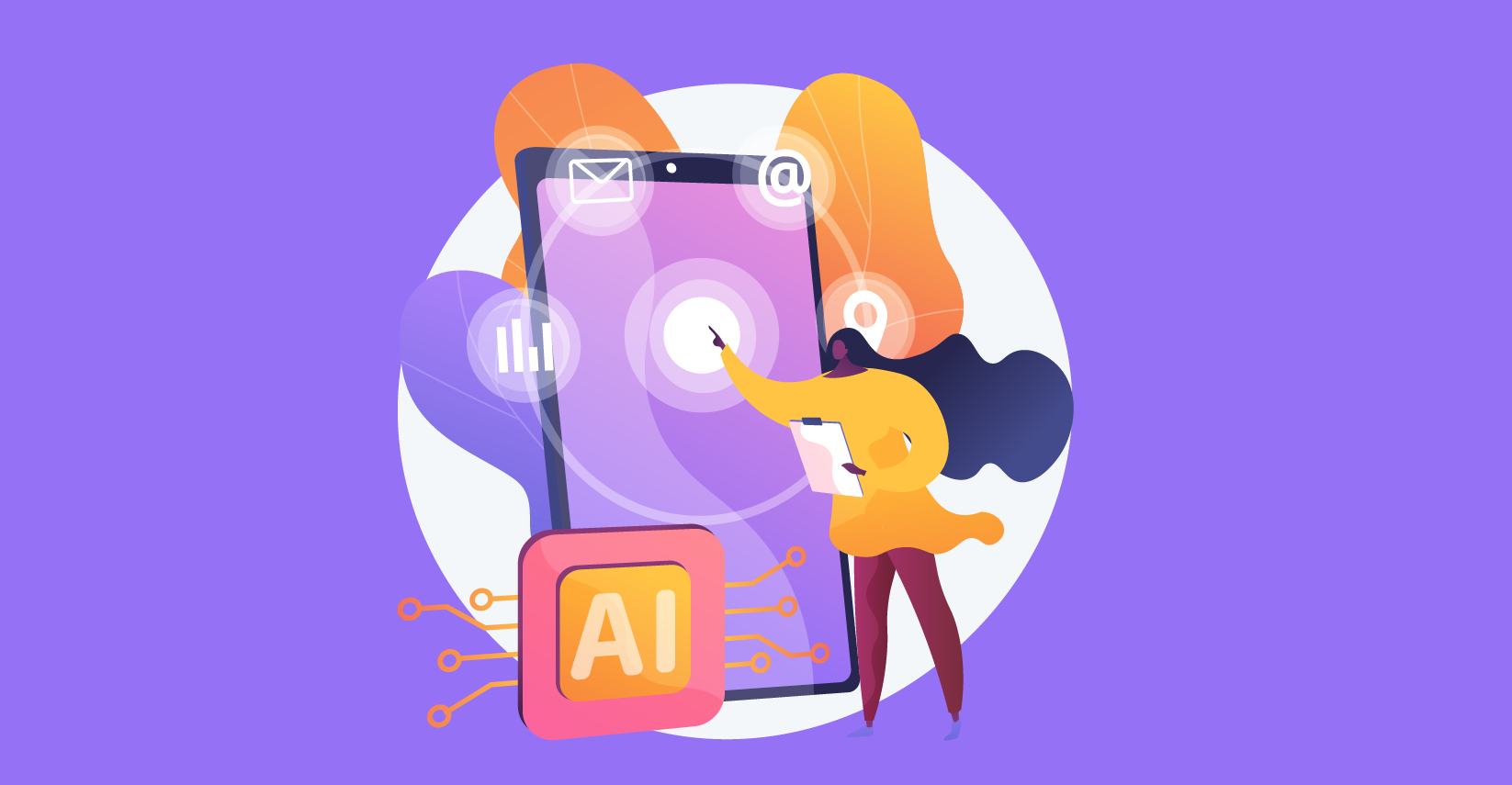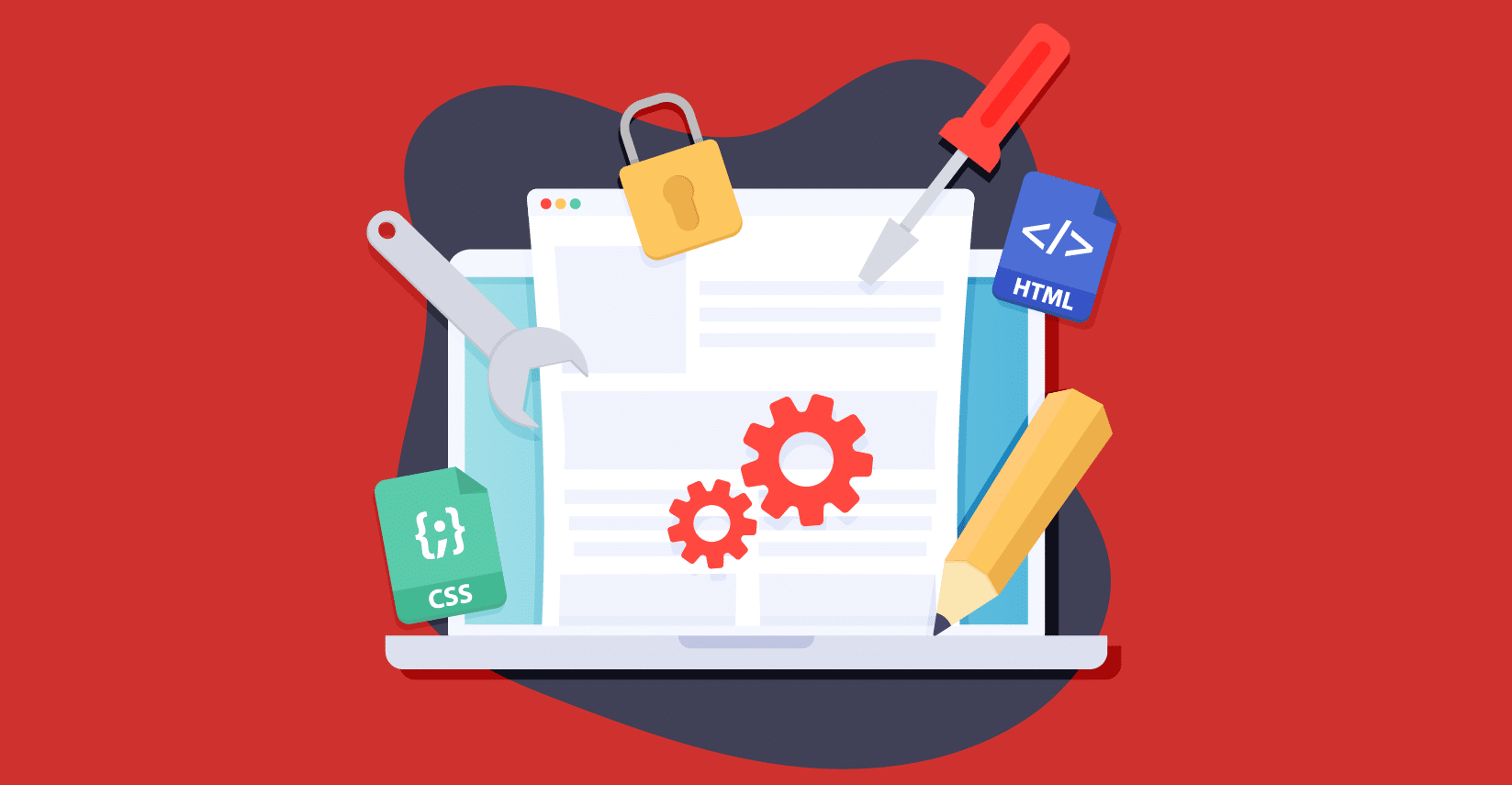Testing is an important step in the development lifecycle of a software. It ensures quality and reliability. However, the process is often seen as boring and redundant.
Thankfully, software quality assurance has come a long way. Testers no longer need to spend hours creating test cases.
Instead, many now opt for test case generation using generative AI.
The process has pretty much become the cornerstone of easy QA processes. Testers who tried this method report that the test cases generated with AI often catch issues they might’ve missed.
And this is just the tip of the iceberg. Let’s delve deeper into what it means to automatically generate test cases using AI, why it matters, how it works, key benefits, and challenges. We’ll also discuss the popular AI tools and best practices for AI-driven test case creation.
Key Takeaways
- Generative AI can reduce test case creation time by up to 70%. This leads to QA teams being able to generate large, high-quality test suites in minutes instead of hours.
- AI expands test coverage. It does that by systematically identifying edge cases and scenarios that manual testing can overlook. Early defect detection is improved by 30% due to this.
- Strong input quality, such as well-documented acceptance criteria and requirements, is important. That’s because AI works best when it is treated like a junior tester. One who requires clear guidance.
- AI-generated test cases achieve high consistency and repeatability. These qualities are crucial for regression and performance testing. Human errors are minimized.
- The synthetic test data generation by AI allows for realistic and privacy-compliant test scenarios. Dependence on sensitive production data is reduced.
- Adoption challenges include managing AI hallucinations and maintaining human oversight for test relevance. The organizational concerns about data security and AI model hosting also have to be addressed.
- The AI test case generation ecosystem includes versatile tools. These tools include Kualitee, Aqua Cloud, Testsigma, TestRail and automation frameworks like Playwright. Each one of them is suited for different QA tasks, except Kualitee. It’s an all-in-one QA suite.
What are Test Cases?
A conference paper by Dani Almog and Tsipi Heart outlines that the term “Test Case” has been considered as a building block for describing test items. This practice has been carried on since the 1980s.
Along with that, the paper discusses that test cases are documented sequences that define conditions, inputs, actions and expected results to verify software functionalities. They serve as executable instructions. Ones that guide manual testers or automation scripts to validate specific software behaviors.
Test cases cover functional scenarios, along with boundary conditions, edge cases and error paths. This helps ensure that product requirements are met.
We’d also like to add that traditionally, test cases are derived manually from certain specifications. Such as user stories, acceptance criteria and technical requirements. The process is usually labor-intensive and prone to human error.
Testers have to be extremely careful while designing test cases, as they are critical to maintain software quality. Especially in agile and continuous delivery environments.
AI Test Case Generation: What is It?
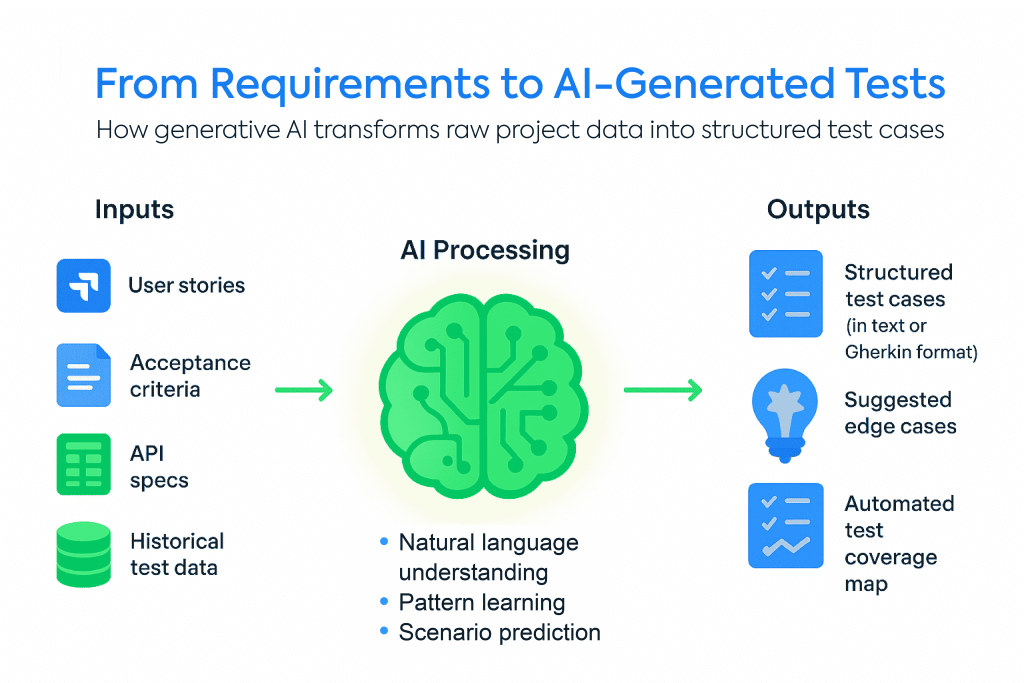
As the name suggests, AI test case generation uses generative intelligence to produce test cases automatically. Large language models (LLMs) and machine learning techniques are used to achieve this goal.
These AI systems analyze different inputs, for example, textual requirements, historical test suites, defect logs, API specifications, etc. They then use those inputs to come up with relevant test scenarios. The formats in which test cases are generated are usually compatible with manual or automated testing workflows, like Gherkin for BDD.
What this approach does well is to address the limitations of manual generation. Scaling coverage, identifying overlooked edge cases and adapting to evolving software features becomes child’s play.
To understand how a test management tool generates test cases using AI, watch this video by Kualitee:
How AI Test Case Generation Works
There are several stages in an AI-driven test case generation workflow. Each stage is supported by advances in natural language understanding (NLU), machine learning and deep learning models.
If you’re confused as to what they are, don’t be. Most of these models are your typical transformer-based architectures, like GPT and BERT.
That said, this process automates and optimizes the manual effort involved in translating requirements and specifications into executable test scenarios.
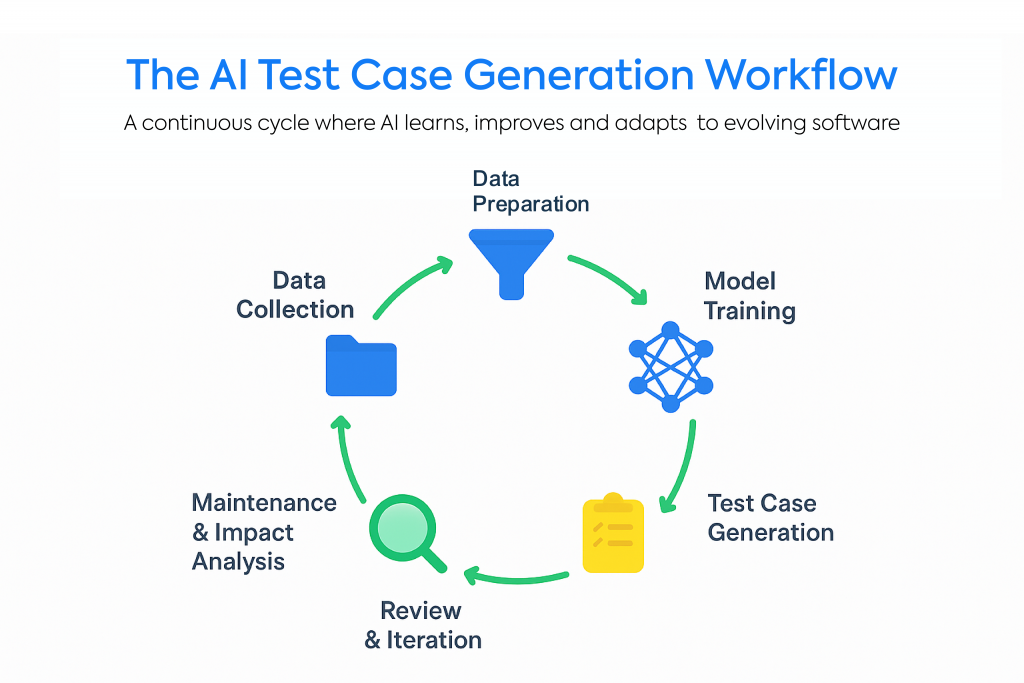
1. Data Collection
AI systems have to be provided with data from diverse sources to build a rich dataset for training and inference. These sources include:
- Jira user stories
- Existing test case repositories
- Acceptance criteria
- Requirement documents (Word, PDFs)
- API specifications
- UI mockups
- User behavior analytics
Do note that only relevant data should be provided to AI systems. So far, the process of data collection has been done mostly manually, while some parts are automated using LLMs.
However, this might change soon, as according to Gleecus, 20% of test data for consumer-facing applications is projected to be synthetically generated by AI by 2025.

2. Data Preparation
So, the data is gathered. Now it undergoes preprocessing. This includes cleaning, normalization and transformation into structured formats suitable for AI ingestion.
You might ask why preprocessing is done. Well, as per WJARR’s paper on Automated Test Case Generation with AI, the cleaning and transformation significantly improve the accuracy of an AI model. The overall effectiveness of the model also increases since the data becomes high-quality and can be consistently inputted.
For a deeper insight, note that the natural language processing techniques extract important elements from textual sources. The elements in question are usually actions, inputs, expected outputs and dependencies. Then, ambiguities and missing data points are identified or flagged using AI heuristics to improve data quality.
3. Model Training & Understanding
As mentioned earlier, AI models are based on transformer architectures (GPT or BERT). They learn complex patterns and relationships embedded within the data.
These models understand how software components correspond to expected behaviors. Along with the logical sequence of test steps.
Similarly, deep learning techniques like reinforcement learning are implemented. This enables the AI to continuously refine its test case generation strategies. It does that by evaluating previous outputs against quality metrics like coverage and defect discovery rates.
Tools like Kualitee and EvoSuite use AI algorithms for test case generation. They analyze requirements and specifications to do so, effectively covering critical paths and edge cases.

4. Test Case Generation
After model training comes the practical use of the trained generative AI model. New inputs are provided to it. Be they updated user stories, acceptance criteria or software specifications. The trained model generates comprehensive test cases that include:
- Clear test case titles and descriptions
- Preconditions necessary for the test
- Step-by-step actions to follow
- Expected results corresponding to each step
The model is able to output test cases in plain text or Gherkin format, depending on what the user wants.
Autify outlines that these AI-generated test cases help maintain pace with rapid CI/CD cycles. They automate the translation of requirements into executable test scripts, which facilitates scale and speed.
5. Review and Iteration
When it comes to this stage, human testers carefully review the generated test cases. Correctness, coverage and relevance are all evaluated.
This evaluation and feedback loop allows continuous AI model refinement. Leading to future test case quality improvement. And not just that, reviewing also assists testers in prioritizing test cases based on risk and coverage gaps manually.
If you need another reason as to why human intervention is needed to review AI-generated test cases. Note that Sandeep Akinepalli’s paper about the future of AI-driven test automation includes a survey result. It proves that 80% organizations observed improvements in defect detection rates when combining AI generation with expert review.
6. Maintenance and Impact Analysis
If trained to do so, AI models continuously monitor software changes. For example, code commits, UI updates and API revisions. They then dynamically update test cases and suggest relevant regression testing.
This adaptability ensures test suites remain relevant and effective as the software and user requirements evolve.
To prove this, Filippo Ricca, along with others, published research on next-generation software testing. They found that AI-driven test case maintenance improves testing efficiency. It also reduces regression failures by dynamically adapting tests to changing application conditions.
Benefits of Using AI to Generate Test Cases
There are many transformative benefits of generative AI in test case creation. Some of them are listed below.

1. Faster Test Case Creation
A study published by Habeeb Agoro discusses the development and implementation of an AI-powered framework. One that’s designed to automate the generation of test cases. It also states that teams adopting AI-assisted test case creation report up to 70% reduction in test creation time. As compared to traditional manual efforts.
Time is a valuable resource in software development. The sooner you finish testing, the sooner you may release your product to the market.
Generative AI can create hundreds of relevant test cases within minutes. The time taken in manual test design is reduced massively. While the old approach worked well, testers had to carefully go through each step of the test case creation process.
Similarly, when it comes to running the cases, it had to be done manually as well. So, you’re not just spending extra time in the creation of test cases, you’re doing it when running them as well.
AI runs tests automatically, without the need for human intervention, covering numerous cases at once.
The AI-based test generation and execution can also run 24/7. This allows you to conduct lengthy regression tests overnight or on weekends. When you utilize AI in software testing, your team does not have to wait for test results during business hours, and your development process moves forward without unnecessary delays.
2. Increased Test Coverage
The test cases generated by AI achieve around 70% to 85% test coverage, depending on how many times you re-run the generation process. This level of coverage is generally higher than what an average tester produces manually.
If you’re unsure whether your tests cover most scenarios, using AI to generate test cases is always the solution.
Like we mentioned above, AI helps in test coverage by analyzing massive volumes of data to identify potential gaps. This means you can create test cases that detect elusive flaws that may have gotten past manual testing. And improve the general caliber of your product.
This is especially the case when you’re creating a complicated mobile application with multiple features, capabilities, and scenarios.
Traditional test case creation may cover the obvious scenarios, but what about the nooks and crannies where bugs can hide unnoticed? This is a situation where AI test generation plays the right card.
It allows you to cover an extensive spectrum of circumstances without having to manually create each test case.
Something that we’d like to add is that it’s not just about the quantity of new test cases. AI can also improve the quality of your existing tests. It helps QA teams find recurrent defects that may reveal underlying problems by 30%.

So, your team of developers can address possible issues proactively, thereby enhancing the general efficacy of your software application before it gets to your users.
Read More: How Much Test Coverage is Enough?
3. Improved Accuracy
Gartner reports that leaders see 43% higher testing accuracy when using AI. And that’s because there’s always a chance of human error in manual test case creation. Especially if your testers spend hours working, because obviously, fatigue and inconsistency kick in.
A small error or lack of concentration can result in erroneous test cases. This is where AI-powered software accuracy comes into play.
When it comes to performing test cases, A tools provide unrivaled precision, ensuring that the same test generates the same results every time it is run.
This level of precision is particularly important for functionalities and scenarios that require a high level of dependability.
Consider regression testing, which involves determining whether recent modifications have inadvertently harmed existing functionality.
Manually carrying out these tests or creating them can be time-consuming and prone to error. AI accomplishes this effortlessly, running hundreds of tests for regression without skipping a beat.
As a result, your software’s basic features remain intact and unaffected during updates.
AI’s precision extends to cases involving large datasets or advanced calculations. For example, while testing algorithms or processing information, AI can mimic a variety of inputs and check that the outcomes match what is intended.
This level of accuracy is necessary for situations where even a minor difference in output might have serious implications. So, basically, AI can not only help in making more accurate test cases but also in better test management.
4. Cost Savings
Automated test case generation and maintenance reduce testing costs by up to 50%.
Ongoing test upkeep and resource expenditures are minimized. In turn, QA teams are able to focus on strategic, exploratory testing activities.
We’d also like to add that once test cases are created using AI, you don’t need to hire people just to execute them. The model, like the one Kualitee offers, can do it for you. This leads to further expenditure cuts as the need for hiring test executioners is eliminated.
5. Better Synthetic Test Data Generation
“A test case that one of my team members came up with led to a data leak,” is what a QA team lead once told us.
With AI becoming better over the years, it can now produce synthetic, realistic and privacy-compliant test data. This enables in-depth validation of various real-world conditions without risking sensitive production data leaks.
That’s one problem solved for all the QA leads out there.
6. Smooth Integration & Automation
Perhaps the best thing about AI-generated test cases is that they can be directly displayed in popular test management platforms like Kualitee and TestRail. Along with that, these test cases can also be fed into automated testing frameworks, such as Playwright.
This speeds up adoption and enables continuous testing in DevOps pipelines. CI/CD cycles become more reliable and faster.
See which integrations Kualitee offers.
Challenges in Using AI for Test Case Generation
While AI test case generation introduces various benefits, it comes with its own set of challenges as well, and understandably so.
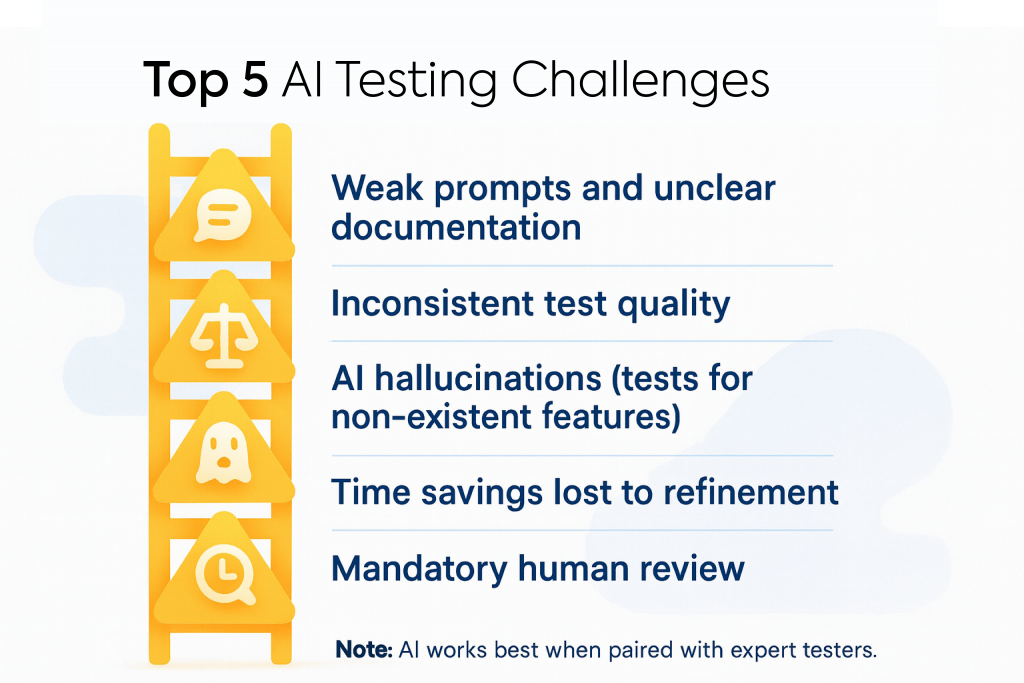
1. Needs Strong Prompting & Context
Effective AI test case generation is heavily reliant on precise inputs. Detailed acceptance criteria and well-defined user stories are needed for you to get accurate tests.
Users frequently compare AI to “the most junior QA you’ve ever met.” Meaning that AI requires clear guidance to perform well.
For example, testers using Jira with well-crafted acceptance criteria often report achieving around 60-70% coverage from AI-generated test cases. However, vague or incomplete requirements drastically reduce AI output quality. This leads to irrelevant or insufficient test scenarios.
2. Quality is Inconsistent
Automatic test case generation using AI sometimes suffers from brittleness or irrelevance. Users note that while AI creations often provide good line coverage, the tests are sometimes not maintainable.
There are instances where test scenarios fail to align with actual user stories. Leading to redundant or incorrect tests that require manual pruning.
3. Hallucinations and Mismatch with Reality
One of the more frustrating challenges is AI’s tendency to hallucinate. We’ve seen users complain, “It writes test cases for features we don’t have.”
There are times when it can fabricate test cases for features that don’t exist or generate tests based on incorrect interpretations of requirements. Even if this happens rarely, it can be frustrating for users who face this issue.
This phenomenon necessitates human oversight to validate relevance and accuracy.
4. Saves time – Until It Doesn’t
We’ve seen AI create valuable draft scenarios. But we’ve also seen the quality of those drafts being at the mercy of existing documentation.
Poor or incomplete docs mean testers still spend considerable effort refining and editing AI outputs. As stated by users: “Great scenarios, but steps were weak due to poor docs,” and “I still spent significant time filtering and editing test cases.”
This can erode the initial time savings. So, unless your docs are top-notch, AI won’t be able to do much for you.
5. Human Review is Essential
AI is widely considered an enabler. Rather than a replacement for professional testers.
While it can bootstrap test creation effectively, expert review is mandatory to ensure test validity. Along with coverage completeness and alignment with business logic.
“A good starting point, but you still review and refine,” in the words of a user.
Popular AI Tools for Test Case Generation in 2025
There are now a variety of AI-powered test case generation tools on the market.
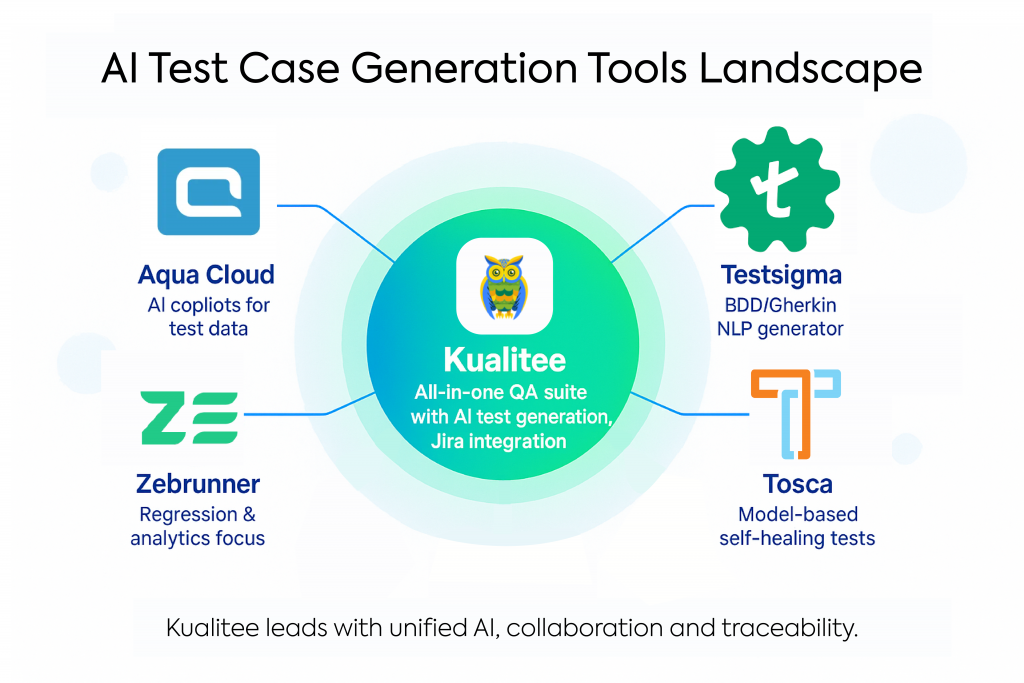
Kualitee
We’ve designed Kualitee to stand out among the lot of tools out there. It’s an advanced AI-powered test management platform designed to help QA teams with intelligent test case generation. Kualitee offers comprehensive traceability and integration capabilities. Unlike many other tools, it has a blend of AI-driven automation and real-time collaboration features. Both automated and manual testing workflows are supported.
Additionally, Kualitee’s Jira integration allows teams to draft test cases directly from user stories and acceptance criteria. All while assisting in gap analysis and coverage enhancement. There’s also an intuitive interface that supports continuous testing cycles. This makes Kualitee ideal for DevOps and Agile environments that are aiming to accelerate release timelines.
Embedded analytics and customizable dashboards are also offered to users. You get unmatched visibility into defect trends, defect coverage and execution status. These things make Kualitee a superior solution for organizations seeking scalability and strategic testing management.
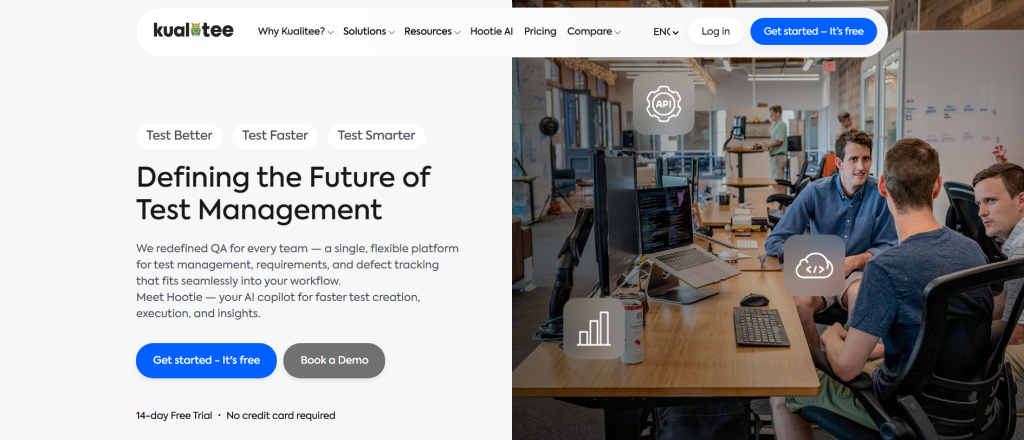
So, sign up today or book a demo to experience this superiority yourself.
Aqua Cloud
Aqua Cloud offers AI copilots focused on generating smart test cases and synthetic test data. It provides good scenario coverage along with integrations into existing QA toolchains. The tool emphasizes comprehensive test creation to support broad functional and non-functional testing needs.
Test Rail
TestRail is another tool that improves test management with AI features. It facilitates XML import of AI-generated test cases. And ensures precise traceability across requirements, tests and defects. Teams can manage extensive test suites with ease with the help of TestRail.
Testsigma
Testsigma delivers a natural language-based AI assistant that’s tailored for creating BDD/Gherkin-style test cases. It excels in bridging manual and automated testing. This allows teams to leverage NLP for accelerated and accurate test drafting suitable for both technical and non-technical users.
AIO Test Case Manager
AIO Test Case Manager provides AI-driven integration within Jira environments. It allows automating test case creation and management. This leads to better workflows by aligning project management with QA activities.
Tosca
Tosca is known for its model-based testing paradigm empowered by AI. It provides self-healing capabilities and supports continuous integration pipelines. Teams are able to maintain test suites amid frequent application changes.
Zebrunner
Zebrunner focuses on optimizing regression and API testing by generating AI-assisted test cases. It can do that from Jira and existing repositories. Its analytics engine offers performance insights that help QA teams prioritize testing efforts effectively.
Takeaway
Generative AI has significantly changed how we go about test cases in QA. It has made the process more streamlined and test case creation time is reduced by up to 70%.
And not just that, test coverage and human errors are also minimized thanks to it. With AI, QA teams can focus on strategic or exploratory testing rather than building test cases.
However, these advantages come at a cost. There are several challenges, like the necessity for strong documentation and occasional inaccuracies or “hallucinations.”
Organizations are recommended to adopt AI-driven testing tools like Kualitee. With such a tool, they can expect improvements in operational efficiency and accuracy. All while adopting a more agile development approach.
Frequently Asked Questions (FAQs)
Q- How to generate test cases using generative AI?
To do it, first you have to gather detailed requirements or user stories. Then, feed them into an AI test case creation tool, such as Kualitee. And once you’ve got the generated test cases, refine them before use.
Q- Can ChatGPT generate test cases?
Yes, ChatGPT can draft test cases from textual inputs. However, it requires human review for accuracy, context relevance and appropriate coverage. Hence, we recommend using a tool that’s built for the purpose of creating test cases, instead of ChatGPT.
Q- How to use AI in QA testing?
Use AI for generating test cases, synthetic test data and automating test execution. Besides this, it can also be used to conduct risk analysis-driven prioritization and enable maintenance of evolving test suites through self-healing.






















